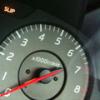Injector Duty And Fuel Consumption
Announcements
-
Similar Content
-
Latest Posts
-
It's needed for rolling idle up, and I think it is a decider on VCT also.
-
I mean, not really. Link ECU's can absolutely still have errors from the ECU thinking it's getting a sensor it's not expecting. I would imagine the speed at the ECU level in Nistune does absolutely nothing anyway? I assume the ECU does not do any fancy TC stuff with regards to front+rear wheel speed or anything of that like anyway. Someone who uses Nistune may be more fluent in it.
-
People said the same thing when the R35 going into development was announced.









Recommended Posts
Create an account or sign in to comment
You need to be a member in order to leave a comment
Create an account
Sign up for a new account in our community. It's easy!
Register a new accountSign in
Already have an account? Sign in here.
Sign In Now